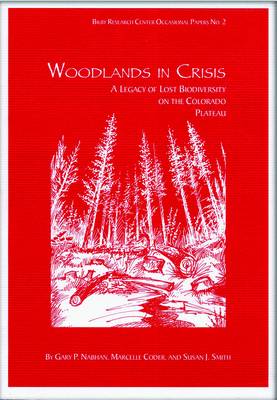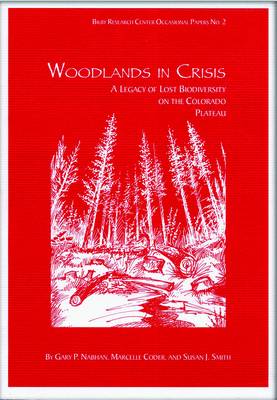
- Retrait gratuit dans votre magasin Club
- 7.000.000 titres dans notre catalogue
- Payer en toute sécurité
- Toujours un magasin près de chez vous
- Retrait gratuit dans votre magasin Club
- 7.000.0000 titres dans notre catalogue
- Payer en toute sécurité
- Toujours un magasin près de chez vous
Woodlands in Crisis
A Legacy of Lost Biodiversity on the Colorado Plateau
Gary Paul Nabhan, Marcelle Coder, Susan J Smith, Patricia West
32,45 €
+ 64 points
Description
In recent years, the West has suffered from unprecedented stand-replacing wildfires, and the government has invested more money in preventative forest thinning than ever before. This forest crisis has led to much controversy over the Healthy Forests legislation passed by Congress in 2003. On the Colorado Plateau, it has also spurred heated debates regarding the degree to which thinning can truly serve to restore wooded habitats and what reference conditions and or restoration goals are needed to guide such plans. This book offers a primer for understanding how diverse land-use histories have impacted the health of pine-dominated ecosystems in the West and points to measures for better managing them in the future. It draws on a systematic review of the historic effects of land use and climate on ecosystem health, biodiversity, and non-timber forest products in four specific landscapes on the Colorado Plateau--the Jemez Mountains in New Mexico, the Chuska Mountains in Arizona, Mesa Verde in Colorado, and the San Francisco Volcanic Shield in Arizona--all of which have long histories of human occupation and use of forest products. The authors evaluate the degree to which livestock grazing and other cultural land uses have historically reduced the frequency, severity and areal extent of fires, the species richness of understory plants, and the availability of non-timber forest products formerly harvested by Native, Hispanic and Anglo American communities. By examining the many natural and cultural influences upon biodiversity and ecosystem health, a much more robust and site-specific understanding of each place is possible. With improved and localized information, management decisions can be guided by a deeper and broader understanding of reference conditions, current threats, and goals for management and restoration. Now that there is new support for forest management, this book considers how that support can be used not merely to reduce the frequency of property-damaging fires over the short-term, but to restore the overall health and diversity of our woodlands.
Spécifications
Parties prenantes
- Auteur(s) :
- Editeur:
Contenu
- Nombre de pages :
- 100
- Langue:
- Anglais
- Collection :
Caractéristiques
- EAN:
- 9780971878662
- Date de parution :
- 01-09-04
- Format:
- Livre broché
- Format numérique:
- Trade paperback (VS)
- Dimensions :
- 178 mm x 258 mm
- Poids :
- 344 g

Les avis
Nous publions uniquement les avis qui respectent les conditions requises. Consultez nos conditions pour les avis.






